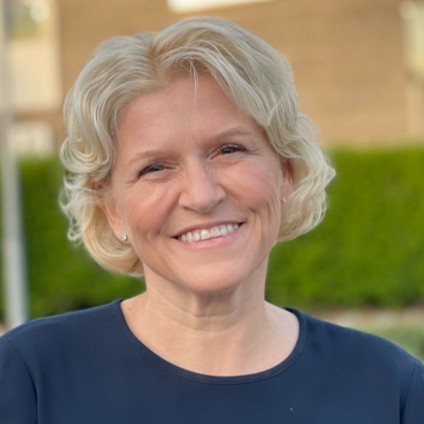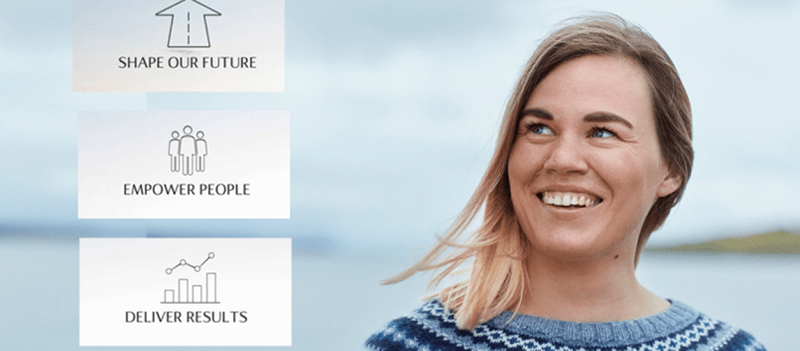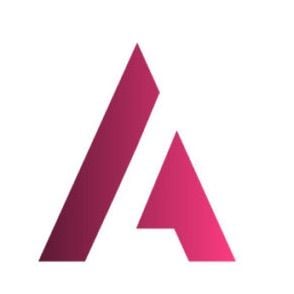The general consensus these days is that diversity is important because it drives better business performance. The research underpinning this is compelling; diverse and inclusive teams foster more creativity and innovation - and perform better. So why are we still experiencing significant diversity gaps both in general and within IT and Tech- and what can we do about it at an organizational, functional and personal level?
Based on the business case for diversity and inclusion, companies should really be eager to reap the benefits and to put corporate and organizational frameworks in place that enable this – and some are well on their way. An example is Equinor where I work - we have set an ambition that by 2025, all teams in our company should be inclusive and diverse.
D&I practices at Equinor
Diversity in Equinor includes experience, competence, age, gender, education, cultural background, religion, sexual orientation, disabilities and more - all that helps shape our thoughts and perspectives. Inclusion is embracing and driving a culture where all can bring their whole self to work, have their voices heard, and be able to share their ideas and perform at their best. To realise and measure this, we have a diversity & inclusion KPI that goes across all areas of the company. We have also implemented a recruitment target of 50-50 balance in gender + nationality for new graduates & experienced hires. Finally, we do extensive training on D&I and unconscious bias and have introduced paid parental leave globally for all Equinor group employees.
But in addition to corporate frameworks and policies, there are also opportunities for targeted efforts within specific areas or functions. As Equinor’s CIO, I have taken a special interest in the IT & Tech area where diversity is still a challenge- particularly related to gender. An important reminder of this happened in one of my first meetings as a new CIO where I attended together with a male colleague. And surprise, surprise- everyone assumed he was the CIO and that my job was to carry his briefcase. We cleared that up and even laughed about it, but such assumptions should not be taken lightly.
The problem of diversity in tech
The hard facts show that today only about 20% of IT professionals across the world are women. To me this is an important challenge to address as part of D&I efforts, especially as IT becomes more and more fundamental to the way we work and interact. The people who choose a career within IT are the ones who get to shape what products and services we will have access to in the future. And to make these solutions innovative and ensure they address different needs, the teams who design and develop them must also be diverse. So - what are we in Equinor IT doing to make that happen? Here are some examples– maybe there is something here that can give you an idea or work for you:
- We focus on diversity in recruitment, both for summer students, graduates and experienced hires. When it comes to the two first, I personally engage in the process to ensure that our candidate selection reflects our diversity expectations when it comes to gender, nationality and other factors
- We actively support initiatives targeted at girls- such as GirlTechFest (link). This is such a fun thing to be part of- and I’ll admit that it is somewhat personal to me. I want my 2 girls to understand that when they grow up, the most interesting jobs will be found within tech. And that requires exposure & mastery from an early age
- We have partnered with the Ada project at the Norwegian University for Science and Technology- supporting their efforts to attract girls to ICT studies and to prevent dropouts. What I enjoy most is perhaps meeting the first-year students and showing them how important IT and tech is to Equinor. This is a great opportunity for us to be seen as an attractive future employer, but even more important to us is encouraging more girls to choose IT!
- We participate in events like "Girls Day in Tech" at the University of Tromsø. Here, students meet female role models and test coding & practical tasks exemplifying how technology is applied in the work life. This collaboration is part of our “Heroes of tomorrow” program aimed at giving students a desire to learn and discover that math, science & tech is the foundation to solve key issues societies are facing.
- We target attendance at conferences working to promote diversity- such as NorSIS Security Divas, a key network for females studying or working with information security- an area where only 1 out of 10 professionals worldwide is a woman.
- We have also partnered with the ODA network – Scandinavia’s leading network for women in tech - aiming to empower women in technology to lead the change
- We work with & sometimes recruit from Unicus - a consultancy that delivers high quality IT services, but only employs people with Asperger syndrome- something they view as an opportunity rather than a challenge – and we tend to agree!
"Well-meaning" to "well-doing"
I feel privileged that I can help put diversity and inclusion on the agenda for the function I lead and that we in IT have plans in place to improve together. We still have a way to go, but the good news is that every action matters - and that you do not have to be a CIO to make a difference. We can all contribute, regardless of age, background, gender or current role. We can strive to be good role models, we can take the time to support our colleagues, and we can make it personal by putting effort into moving ourselves from being “well-meaning” to “well-doing”. And the latter is perhaps the key here - our own willingness and ability to change and to actively look for and appreciate people and views that differ from our own. This includes not only accepting that we have colleagues who look, think, act and choose differently– but acknowledging that this adds value and actively using the differences to improve our collective performance.
Some like to illustrate this by the statement “Diversity Is Being Invited to the Party; Inclusion Is Being Asked to Dance” – and that can be a helpful way to distinguish between the two. But what I find challenging is the underlying assumption that someone has to do the inviting– presumably from a position of strength. I believe that when diversity and inclusion has moved from ambition to reality, there will be no need for party invitations - we will all be on the dance floor already - taking turns as DJs and dance instructors. Because a fully inclusive organisation is one where we all feel that we can bring our true selves and everything that we are to work (including our dance moves) and be appreciated for it.
And that to me is something really worth striving for!






